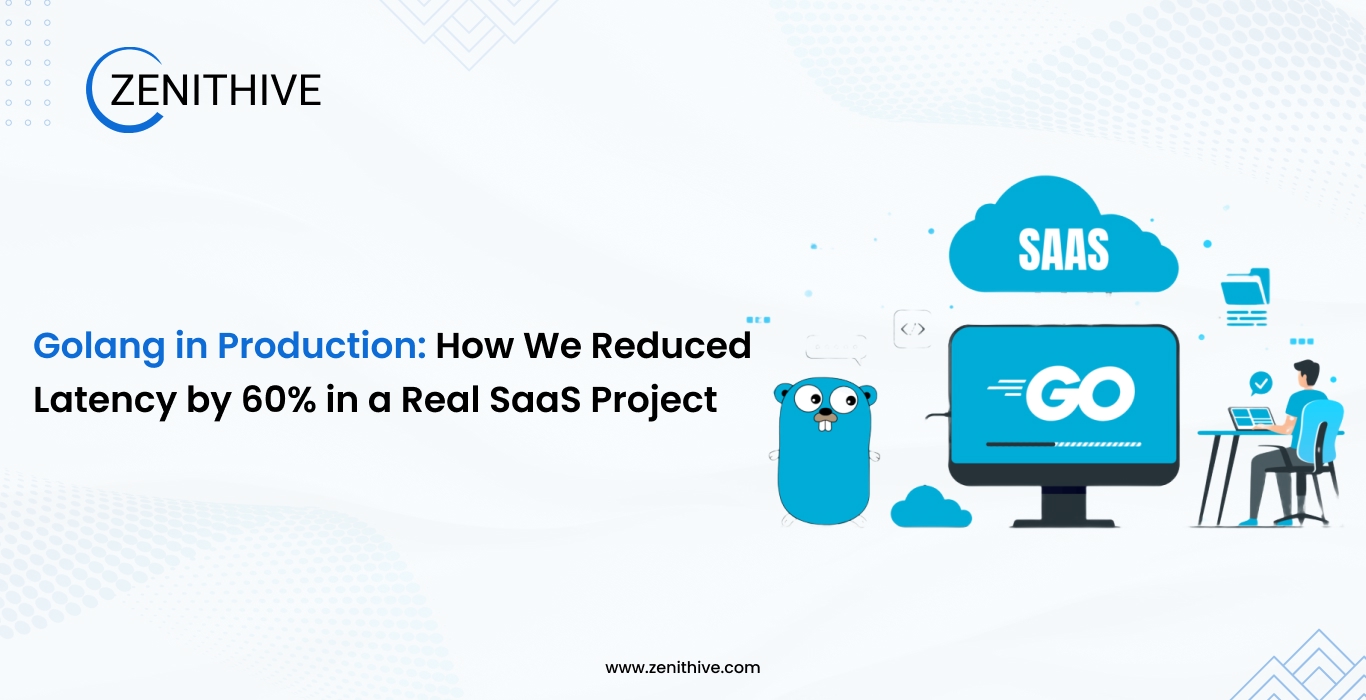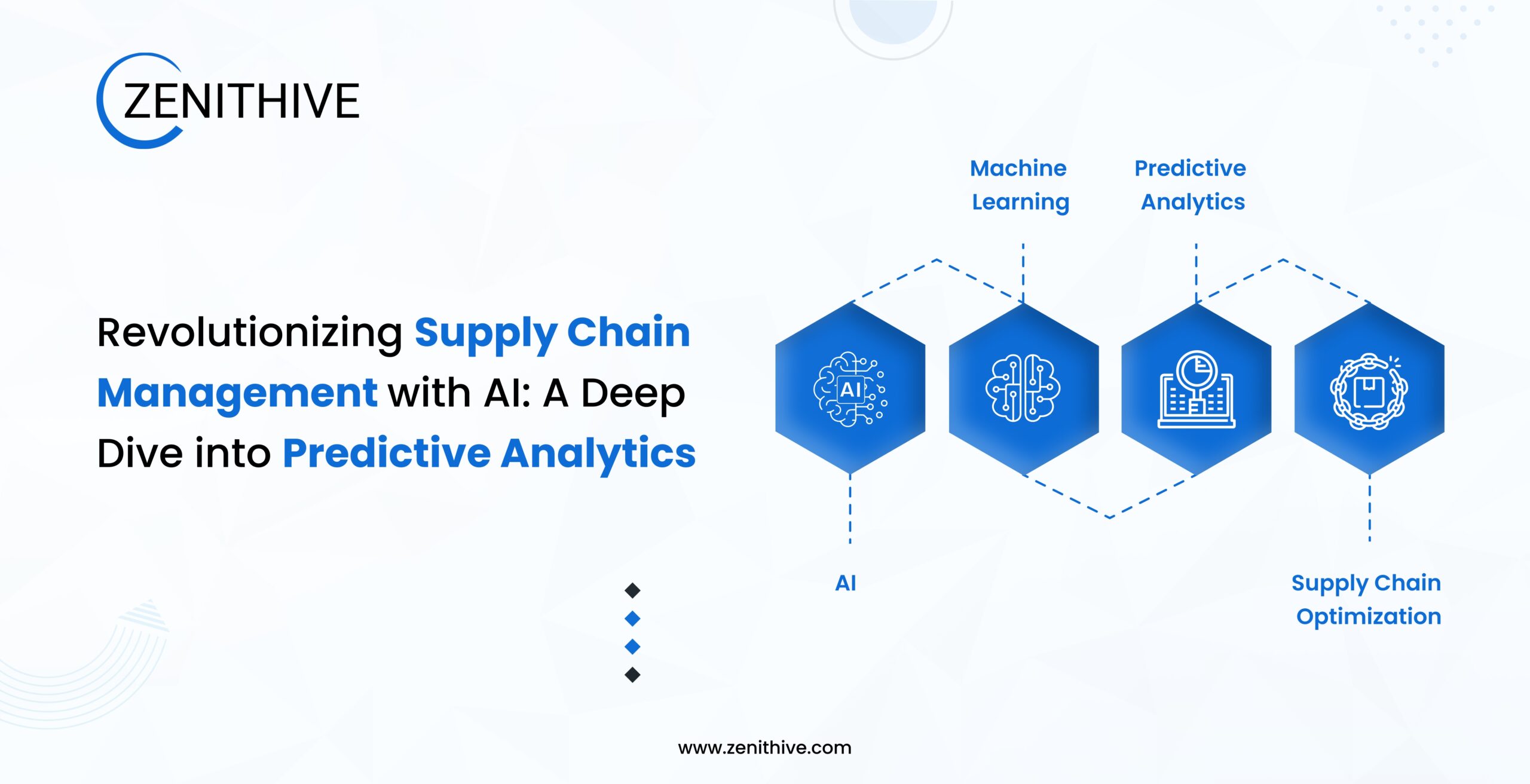Golang in Production: How We Reduced Latency by 60% in a Real SaaS Project

Introduction:
Why Latency is the Silent SaaS Killer
In the fast-moving SaaS world, speed isn’t just nice to have—it’s survival. A SaaS product might offer brilliant features, but if every click, search, or transaction feels sluggish, users will eventually leave. Research shows that even a 100ms delay can reduce conversions by up to 7%. In competitive markets, that’s a death sentence.
At Zenithive, we specialize in building high-performance, scalable software systems. Recently, we faced a real-world challenge with one of our SaaS clients: their system was struggling under load, and customers were noticing. Our goal? Cut API latency by at least 50% without ballooning infrastructure costs.
The solution: Golang.
With careful engineering, we not only met our target but exceeded it, reducing latency by 60% in production. In this blog, we’ll share the technical details of how we achieved it, the lessons we learned, and why Golang is now our go-to language for SaaS performance.
Why Latency Matters in SaaS
Before diving into the solution, let’s step back. Why does latency matter so much in SaaS?
- User Satisfaction
- Every SaaS interaction is a conversation between the user and your system.
- If that “conversation” feels slow, users feel ignored—and frustration builds fast.
- Retention & Churn
- SaaS is subscription-driven. A slow experience gives users excuses to churn.
- Faster systems mean stickier products.
- Revenue Impact
- Case studies from Amazon and Google have shown that fractions of a second can translate into millions in lost revenue.
- In SaaS, latency directly impacts daily active usage, trial-to-paid conversions, and upsells.
- Infrastructure Costs
- Slow systems often require scaling hardware to handle the same load.
- Faster code means fewer servers, lower cloud bills, and more sustainable margins.
In short: Latency is not just a technical metric—it’s a business KPI.
Why We Chose Golang
When faced with this challenge, we had multiple options: scale up existing infrastructure, rewrite the bottlenecked services in a faster language, or add caching layers.
We chose Golang for several reasons:
- Concurrency at its Core
Golang’s goroutines make handling thousands of concurrent requests lightweight and efficient. Perfect for SaaS APIs that face high traffic. - Low Memory Footprint
Unlike Java or Node.js, Go avoids heavy runtime overhead. This meant fewer resources consumed per request. - Fast Compilation and Execution
Go binaries are compiled, not interpreted, giving us near-C performance. - Robust Standard Library
Built-in packages for networking, JSON, HTTP, and concurrency reduced dependency complexity. - Battle-Tested in Production
Companies like Uber, Dropbox, and Cloudflare use Go to run their most demanding services.
We knew Go wasn’t just hype—it was a proven tool for high-performance, network-heavy SaaS applications.
The Performance Challenge We Faced
The SaaS client’s platform was growing quickly. As new customers onboarded, the cracks started to show:
- API response times ballooned from 100ms to 250ms+ under load.
- Peak traffic caused queue backlogs and timeout errors.
- Database performance suffered due to repeated, identical queries.
- Infrastructure costs were creeping up as auto-scaling kicked in more often.
The system was originally built using Node.js for backend services. While Node is great for prototyping, its single-threaded event loop became a bottleneck at scale.
Our mandate:
- Reduce API latency by 50%+.
- Avoid over-scaling infrastructure.
- Maintain developer productivity and code maintainability.
The Golang-Based Solution
We didn’t just “switch to Go.” We systematically identified performance bottlenecks, then re-architected critical services using Go. Here’s what we did:
1. Migrated API Services to Golang
The most time-sensitive APIs were rewritten in Go. This cut response times significantly, especially under high concurrency.
- Node.js average response: ~250ms under load.
- Golang response: ~100ms under the same conditions.
2. Leveraged Goroutines & Channels
- Each incoming request was handled by lightweight goroutines.
- Channels allowed safe communication between concurrent workers.
- Result: the system could handle 2x concurrent requests without extra servers.
3. Connection Pooling for Databases
Previously, connections were opened and closed per request.
- Implemented Go’s database/sql connection pooling.
- Reduced overhead per query.
- Cut query latency by ~30%.
4. Smart Caching Layer
- Identified “hot queries” (frequent, identical DB calls).
- Introduced in-memory caching using Redis with Go client libraries.
- Reduced repetitive database trips.
5. Efficient JSON Handling
Switched from standard JSON libraries to faster Go serializers (jsoniter).
- Serialization/deserialization performance improved by ~25%.
6. Profiling with Go’s pprof
- Used Go’s built-in pprof to identify hotspots in code execution.
Found that a few inefficient loops were causing 15% of latency. - Optimized logic, resulting in leaner CPU usage.
Results: 60% Latency Reduction in Production
After several optimization sprints, here’s what we achieved:
- Average API Latency
- Before: ~250ms
- After: ~100ms
- 60% faster response time.
- Concurrent Load Handling
- Previous: System struggled beyond ~10k concurrent requests.
- Now: Stable at 20k+ concurrent requests without scaling infra.
- Cloud Infrastructure Costs
- Reduced by ~25% because fewer servers were needed.
- User Experience
- Feedback: Users reported noticeably faster page loads and transactions.
- Business outcome: Improved adoption rate and reduced churn indicators.
Key Lessons for SaaS Teams
From this project, we distilled some lessons that can guide other SaaS founders and CTOs:
- Don’t Ignore Latency Early On
- Build monitoring from day one. Latency issues compound as traffic grows.
- Choose the Right Tech for the Job
- Node.js and Python are great for MVPs.
- But when performance is a business need, Golang is hard to beat.
- Measure, Don’t Guess
- Use profiling tools like pprof, load tests, and APMs.
- Identify actual bottlenecks before rewriting code.
- Optimization is Iterative
- It wasn’t one big change—it was dozens of small fixes that added up.
- Performance = Business Advantage
- Faster systems not only please users but also reduce infrastructure costs and improve ROI.
How Zenithive Helps Startups & Enterprises
At Zenithive, we’ve made Golang a core part of our technology stack for building high-performance SaaS applications.
- We help startups move from MVP bottlenecks to scalable architectures.
- We support enterprises modernize critical systems without disrupting business.
- Our expertise spans Golang, Node.js, and Angular, giving us flexibility to choose the best tool for the job.
If your SaaS is struggling with latency, scalability, or infrastructure costs, our team can help you unlock performance without breaking the bank.
📩 Contact us at info@zenithive.com
🌐 Visit us at www.zenithive.com


